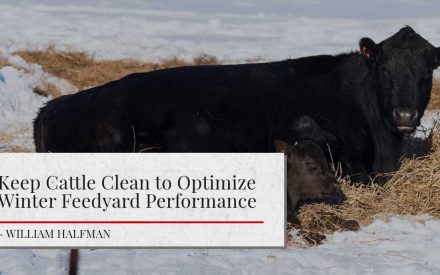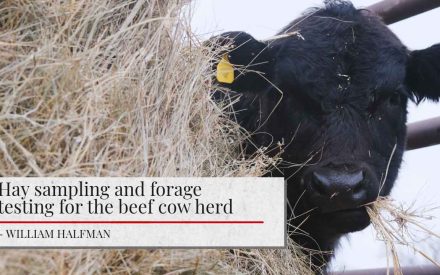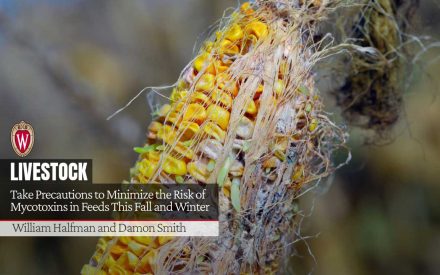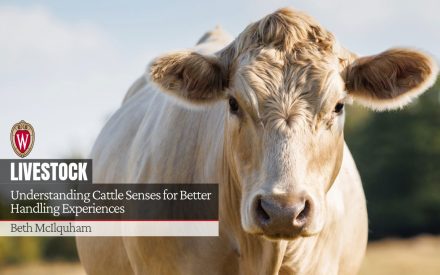This article was originally published in Wisconsin Agriculturist Magazine
Summer is a busy time of year for producers across the state as fences need fixing, cows rotated, and hay needs to be made. However, there is one task that should be added to the to-do list, planning ahead for winter feeding. It may seem a bit premature, but now is the time to ensure enough hay or forages are put away for winter.
The first step in planning is knowing the quality of the hay you plan to feed and the amount you are going to need. Forage testing your hay is an advantageous tool that allows producers to better manage their forages to meet their cows’ needs. Cows can eat approximately 1.1% of their body weight in neutral detergent fiber (NDF); this will vary slightly based on fiber digestibility. That said, there are forages that will fill the cow’s stomach without meeting her nutrient requirements, and others that if they are allowed to fill up on will more than meet their needs and result in over conditioned cows. These forages need to be used accordingly as part of a balanced ration and producers cannot manage what they do not know.
Knowing the amount of hay your cattle require is also important. This goes beyond knowing that a cow can eat roughly 2% of her body weight per day in dry matter (DM). It is important to take into account the average number of winter feeding days for your region of the state and figure in any storage or feeding loss. Regardless of your storage and feeding strategies there will be some loss.
Here is an example, say you plan to feed 20 cows that weigh an average of 1200 lbs from October 1 through April 15 (197 days) in a ring feeder with a panel and hay that was stored tarped on a rock pad. For this example each cow should eat an average of 28 pounds of hay as-fed; due to our storage method we can expect a 7% feed loss, and with our feeding method we can predict a 6% loss in feed waste requiring us to plan ahead to need 32lbs/head/day. This means that each cow would require roughly 3.3 tons of feed for the winter feeding season or 64 tons for the entire group. For many farms maintaining a consistent number of cattle, forage needed doesn’t change much from year to year, unless changes are implemented. Understanding the increasing nutritional needs of the cows during advanced pregnancy stages during the winter weather will allow for intentional harvest of hay to meet increased nutritional needs without further supplementation. Rations can then be formulated once forages are harvested, inventoried, and tested.
Most farmers are going to want to have some level of surplus in case of shortages. The amount of surplus will vary from farm to farm depending on the farmer’s tolerance of risk.
Planning for winter feeding during the summer months may seem tedious. Taking the time now to ensure you have enough forage to last the winter can help save time and money in the long run. In addition, Extension’s Forage Inventory Tool that can be used to help producers organize their forage inventory and cattle needs.
Sources:
- The rules on predicting dry matter intake can be found in the : National Academies of Sciences, Engineering, and Medicine. 2016. Nutritional Requirements of Beef Cattle.
- Big Bale Storage Losses: how different options stack up
- Large round bale feeder design affects hay utilization and beef cow behavior
Reviewed by Bill Halfman, Carolyn Ihde, and Ryan Sterry: UW Madison Division of Extension Agriculture Agents and Educators in Monroe, Crawford, Richland and St, Croix Counties.

 Keep Cattle Clean to Optimize Winter Feedyard Performance
Keep Cattle Clean to Optimize Winter Feedyard Performance Hay sampling and forage testing for the beef cow herd
Hay sampling and forage testing for the beef cow herd Take Precautions to Minimize the Risk of Mycotoxins in Feeds This Fall and Winter
Take Precautions to Minimize the Risk of Mycotoxins in Feeds This Fall and Winter Understanding Cattle Senses for Better Handling Experiences
Understanding Cattle Senses for Better Handling Experiences


